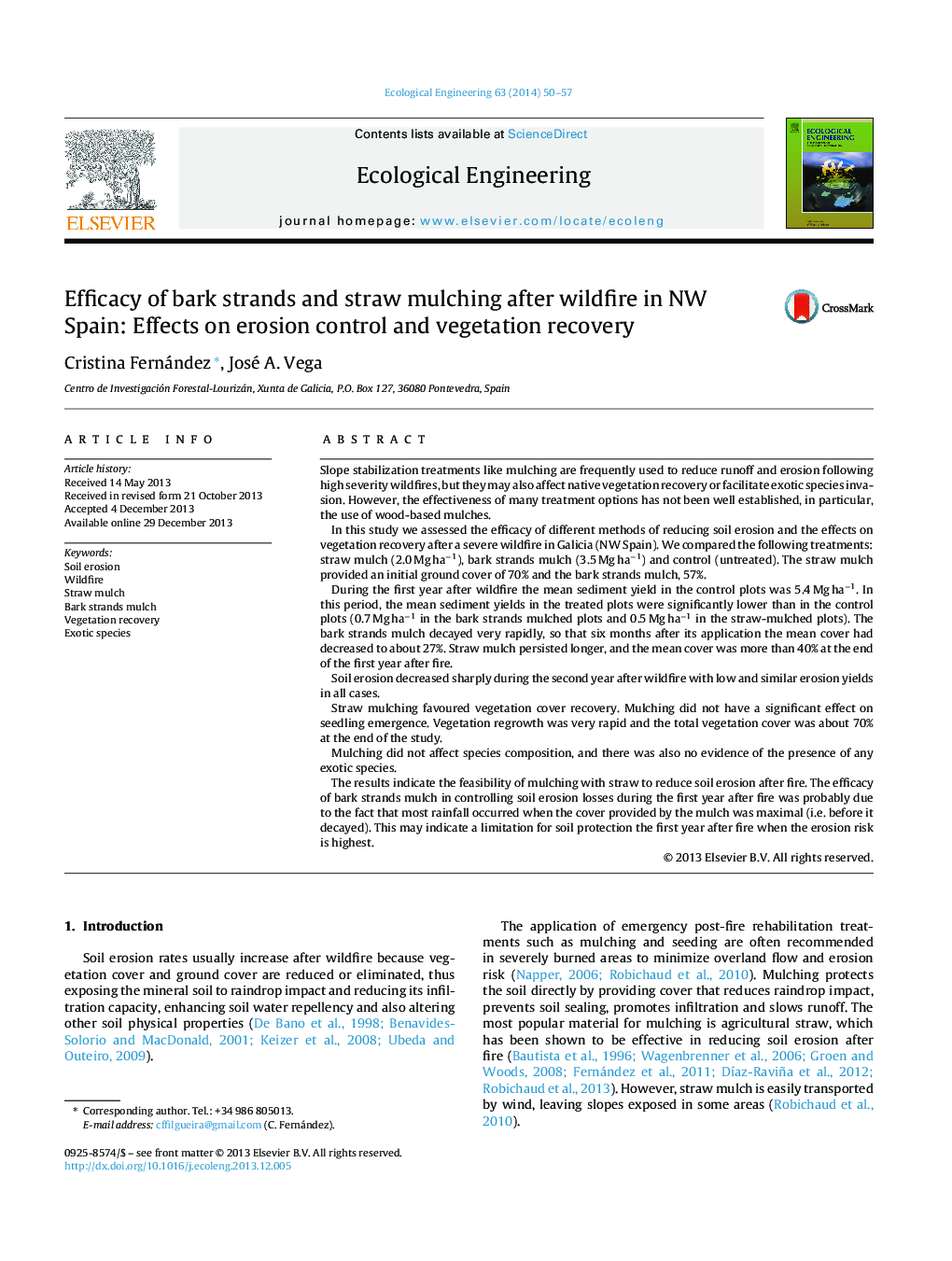| کد مقاله | کد نشریه | سال انتشار | مقاله انگلیسی | نسخه تمام متن |
|---|---|---|---|---|
| 4389617 | 1618036 | 2014 | 8 صفحه PDF | دانلود رایگان |
• Both types of mulches were effective in controlling post-fire erosion.
• Eucalypt bark strands mulch did not persist in time.
• Mulching favoured vegetation regrowth.
• Mulching did not affect species composition.
• Mulching did not enhance the presence of exotic species.
Slope stabilization treatments like mulching are frequently used to reduce runoff and erosion following high severity wildfires, but they may also affect native vegetation recovery or facilitate exotic species invasion. However, the effectiveness of many treatment options has not been well established, in particular, the use of wood-based mulches.In this study we assessed the efficacy of different methods of reducing soil erosion and the effects on vegetation recovery after a severe wildfire in Galicia (NW Spain). We compared the following treatments: straw mulch (2.0 Mg ha−1), bark strands mulch (3.5 Mg ha−1) and control (untreated). The straw mulch provided an initial ground cover of 70% and the bark strands mulch, 57%.During the first year after wildfire the mean sediment yield in the control plots was 5.4 Mg ha−1. In this period, the mean sediment yields in the treated plots were significantly lower than in the control plots (0.7 Mg ha−1 in the bark strands mulched plots and 0.5 Mg ha−1 in the straw-mulched plots). The bark strands mulch decayed very rapidly, so that six months after its application the mean cover had decreased to about 27%. Straw mulch persisted longer, and the mean cover was more than 40% at the end of the first year after fire.Soil erosion decreased sharply during the second year after wildfire with low and similar erosion yields in all cases.Straw mulching favoured vegetation cover recovery. Mulching did not have a significant effect on seedling emergence. Vegetation regrowth was very rapid and the total vegetation cover was about 70% at the end of the study.Mulching did not affect species composition, and there was also no evidence of the presence of any exotic species.The results indicate the feasibility of mulching with straw to reduce soil erosion after fire. The efficacy of bark strands mulch in controlling soil erosion losses during the first year after fire was probably due to the fact that most rainfall occurred when the cover provided by the mulch was maximal (i.e. before it decayed). This may indicate a limitation for soil protection the first year after fire when the erosion risk is highest.
Journal: Ecological Engineering - Volume 63, February 2014, Pages 50–57
